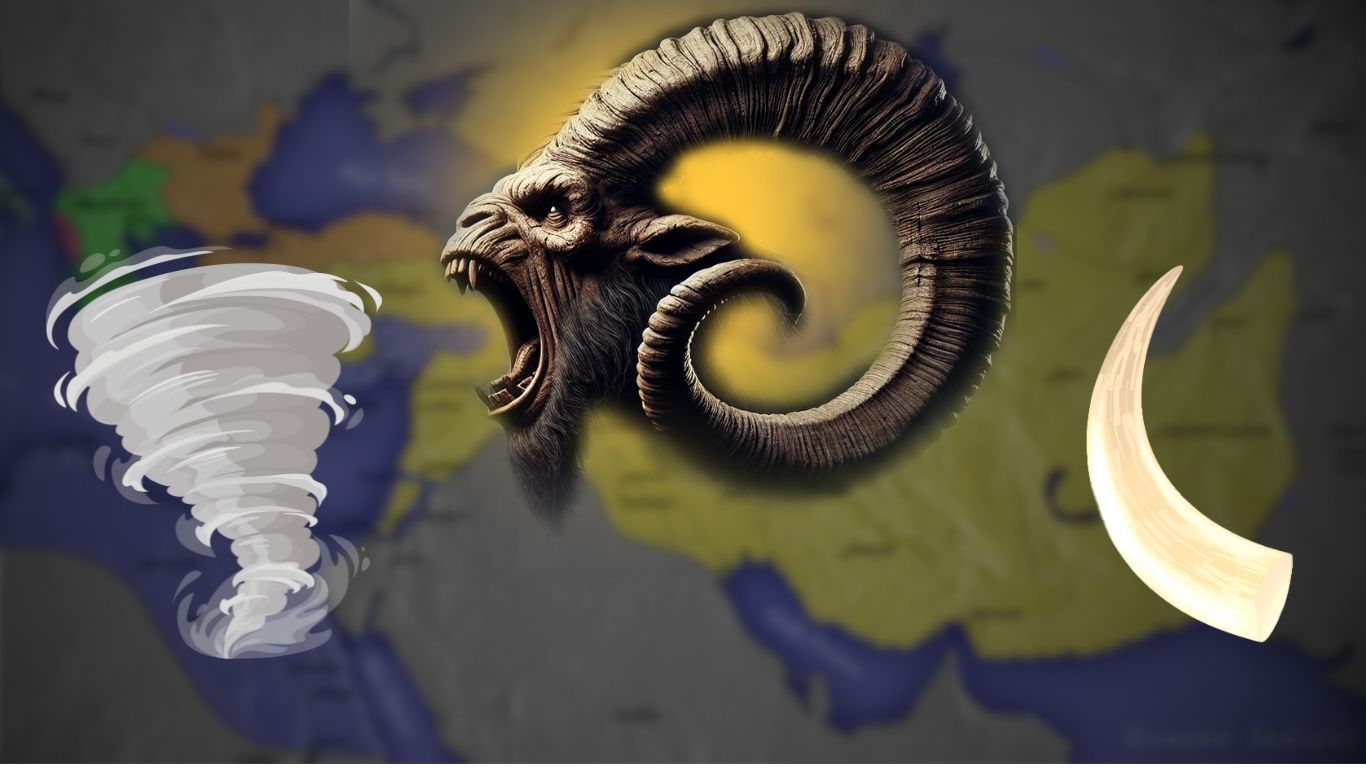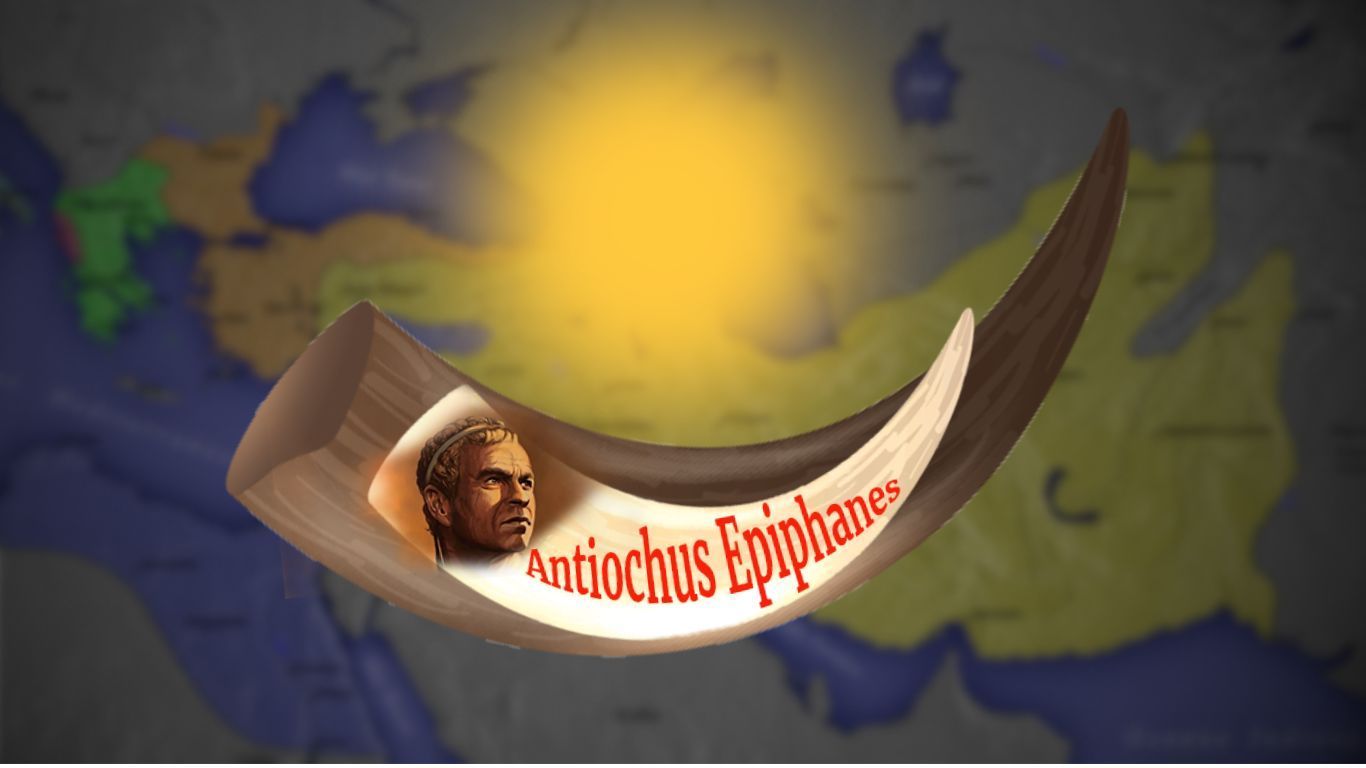The Key Biblical Passage
Daniel 8:8-9 states: "Therefore the he goat waxed very great, and when he was strong, the great horn was broken; and for it came up four notable ones toward the four winds of heaven. And
out of one of them came forth a little horn..."
The interpretation of the "Little Horn" in Daniel 8 has long been a point of theological discussion between Christian denominations. At the root of this discussion revolves around what the text refers to when it says, "out of one of them." Depending on how "them" is identified can change the whole meaning of the chapter. Thus, a proper understanding of this text is crucial to understanding this prophecy.
Two Main Interpretations
There are two primary interpretations of this passage: Most Evangelical and Catholic scholars believe that the Little Horn, whom they identify as Antiochus Epiphanes, emerged from one of the other horns of the divided Greek Empire. Essentially, they believe the prophecy is saying Antiochus came out of Syria.
Adventists maintain that the Little Horn, as the Roman Empire, arose from one of the winds of strife and warfare that was occurring throughout the divided Greek Empire.
Only one of these views can be correct. If it can be proven that the Little Horn arose from another horn, then that disqualifies the Adventist position due to the fact the horns represent Greek powers and Rome did not arise from Greece. However, if we can show that the Little Horn arose from one of the winds of strife, then that also disqualifies the Evangelical/Catholic position, as Antiochus did not arise from one of the winds of strife that was occurring throughout the Greek Empire.
Horns in Bible prophecy
Horns in Bible prophecy typically represent a sovereign power. We confirm this view when we analyze each horn in Daniel 8:
- The ram's two horns represent the kings of Media and Persia (Daniel 8:20)
- The great horn represents the Alexander the Great (Daniel 8:21)
- The four horns that followed, represent the four kingdoms that arose from Alexander's empire (Daniel 8:22)
Here we can see that every horn, thus far, always represents a new sovereign power. The question that we must answer is —should break this pattern and interpret the last horn in this chapter as part of an existing power?
A Horn out of a horn?
The Wind Symbolized in Biblical Prophecy
Notice how the following biblical references support the concept of winds representing strife and conflict:
- "I saw in my vision by night, and, behold,
the four winds
of the heaven strove upon the great sea." Daniel 7:2-3. This text shows winds of conflict stirring up the sea, resulting in the emergence of beast
- "And after these things I saw four angels standing on the four corners of the earth, holding
the four winds of the earth, that the wind should not blow on the earth, nor on the sea, nor on any tree." Revelation 7:1. According to this text, the winds represent strife and upheaval that occurs around the world.
- "Therefore the he goat waxed very great: and when he was strong, the great horn was broken; and for it came up four notable ones toward
the four winds of heaven." Daniel 8:8. You should be able to see that the four horns of the divided Greek Empire were causing strife and confusion as these powers all tried to conquer one another.
People and nations can be sent to and can come out of these winds:
- "The
wind
shall eat up all thy pastors, and thy lovers shall go into captivity: surely then shalt thou be ashamed and confounded for all thy wickedness." Jeremiah 22:22
- "And their camels shall be a booty, and the multitude of their cattle a spoil: and I will scatter into all
winds
them that are in the utmost corners; and I will bring their calamity from all sides thereof, saith the LORD." Jeremiah 49:32
Notice, how the God sent people into the winds referring to the calamity that would come upon them. These texts demonstrate that people and nations can be contained within the winds. However, you must unerstand that if people can be contained in the winds, they can also emerge from the winds.
God's people come out of the four winds
Notice how the four winds are portrayed at the end of time.
"And then shall he send his angels, and shall gather together his elect
FROM THE FOUR WINDS, from the uttermost part of the earth to the uttermost part of heaven." Mark 13:27
Hopefully, by this point, we should have no doubt in our minds that when the the Little Horn came out of "one of them," it was referring to one of the winds of strife, not one of the horns. However, now we must decipher which power arose from the winds of strife.
The Antiochus Epiphanes Theory disqualified
While, it is unlikely that a horn comes out of another horn to symbolize a king and his kingdom, I will not completely dismiss, this interpretation due to the possibility that maybe there's an obscure prophecy found in Scripture where this exact phenomena occurs. Thus, on our checklist, we will place a grey checkmark in the Antiochus column regarding the possibility but unlikley scenario.
The Islamic Empire Theory
There are a number of Christians who believe the Little Horn is Islam. While I do appreciate this alternate perspective, this interpretation faces significant challenges:
- Islam emerged around 632 AD, however, this was long after the winds of strife died down from the divided Greek Empire. In essence, Islam did not arise from one of the winds of strife specifically referred to in Daniel chapter 8, because those winds no longer existed.
- Islam emerged from the Arabian Peninsula. If the Little Horn arose from another horn (a position rejected on this site), then that would mean Islam arose from Greece— a theory that has no basis in historical facts. Thus we must disqualify Islam as the Little Horn in Daniel 8:8-9.
The Papal Interpretation
We also must reject the Papacy as the Little Horn in verses 8-9 for the following reasons:
- The papacy did not emerge from the winds of strife
- It did not originate from the Greek Empire
- Its rise was gradual rather than through conquest
The Case for the Roman Empire
Several factors support identifying the Little Horn as the Roman Empire:
- Historical Context: Rome entered the Greek Empire through warfare with Macedonia during the 3rd century BC
- Prophetic Structure: The Roman Empire emerged as a new sovereign power through one of the winds of strife
- Geographic Alignment: Rome's entry point aligns with the western wind of the divided Greek Empire
Conclusion
Based on the prophetic structure, historical context, and biblical symbolism, the interpretation of the Little Horn emerging from one of the winds of strife, representing the Roman Empire, appears to be the most coherent with both scriptural and historical evidence. This understanding maintains the consistent pattern of sovereign powers in Daniel 8 while aligning with the historical reality of Rome's emergence through the conflicts in the divided Greek Empire.



